June 21 marks National Indigenous Peoples Day, and we're in the midst of National Indigenous History Month, a time dedicated to celebrating the rich heritage of Indigenous Peoples and their contributions to Canada's future.
Our colonized country still has a long way to go in making reparations for the deeply shameful truths of our past and in strengthening our ongoing relationships with Indigenous peoples. We can all do our part to help move reconciliation forward in meaningful, genuine ways.
- To help you find an Indigenous Peoples Day event near you, Tourism Winnipeg offers a round-up.
- Check out our city's growing Indigenous restaurant scene.
Here is some history, as well as links, to help us learn about Indigenous peoples.
- National Aboriginal Day, now National Indigenous Peoples Day, was proclaimed in 1996 by then Governor General of Canada, Roméo LeBlanc, as a result of consultations with various Indigenous groups.
- In Canada, we use the terms First Nation, Métis and Inuit to describe Indigenous populations living on Turtle Island, and there are many unique nations and beautiful cultural differences among them.
- As of March 2021, 164,289 people in Manitoba were registered under the Indian Act (YES, the Indian Act, which was proclaimed by the Dominion of Canada in 1876, is still in effect today). Of the total Indigenous population, 57.1% live on a reserve. There are 63 First Nations in Manitoba, including six of the 20 largest bands in Canada.
- Language shapes the way people think about and interact with the world. In the 2016 Census, more than 70 Indigenous languages were reported, many of which are unique to Canada and spoken nowhere else in the world. In 2016, the number of Indigenous people able to speak an Indigenous language (260K+) exceeded the number who reported having an Indigenous mother tongue (208K+). This is evidence that people are learning these as second languages.
- Learn about the Truth & Reconciliation Commission’s 94 calls to action, including No. 92 for business. You can also view the NCTR's recorded webinar to guide you in your own reconciliation journey, “How to Create a ReconciliACTION plan."
- To learn more about Indigenous history and increase understanding of the many layers of issues, take a self-paced online course offered by BDC, “Four Seasons of Reconciliation.”
- Indigenous people make up 18% of Manitoba’s population and they are younger than the general population, which means they possess incredible economic potential, to the benefit of the country's entire population.
- In 2019, Manitoba's Southern Chiefs Organization (SCO), Manitoba Keewatinowi Okimakanak Inc. (MKO) and Brandon University's Rural Development Institute (RDI) produced a joint report entitled Indigenous Contributions to the Manitoba Economy.
Here’s an excerpt from the report: “The report discovered that Indigenous people in Manitoba spent $9.3 billion in 2016—through Indigenous businesses, governments, household spending and spending on infrastructure. The bulk of that spending was by over 700 Indigenous businesses in the province. The economic impact of Indigenous people in Manitoba was measured in four ways, indicating that they: created and maintained over 35,700 jobs, contributed $2.3 billion to Manitoba’s GDP, provided $1.3 billion in wages and salaries to workers, and contributed $231 million in taxes to the federal and provincial governments. The Indigenous contribution to Manitoba’s GDP is more than either manufacturing, accommodations and food services, or mining and oil and gas extraction.”
- ICYMI, last week, the Southern Chiefs’ Organization Inc (SCO) and Southern Chiefs’ Economic Development LP hosted and presented their inaugural Economic Development Forum. The successful two-day conference featured speakers and topics pertaining in unique ways to increased economic development, participation and wealth. SCO represents 34 Anishinaabe and Dakota Nations and more than 83,000 citizens in what is now called southern Manitoba. To sign up for SCO's newsletter: https://scoinc.mb.ca/



